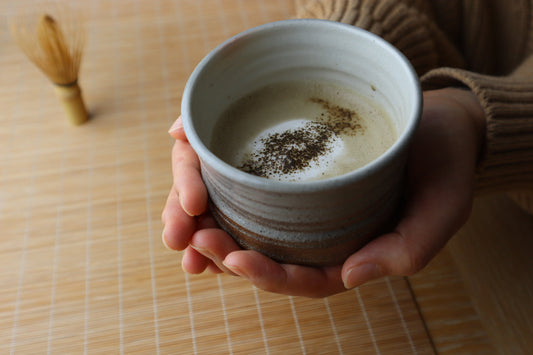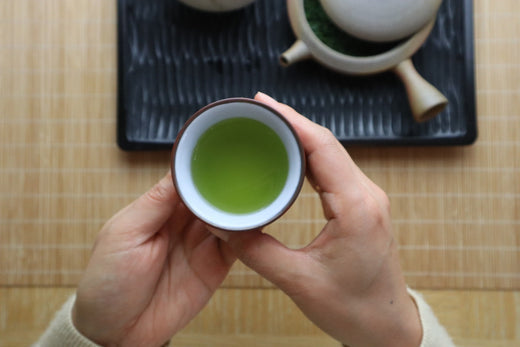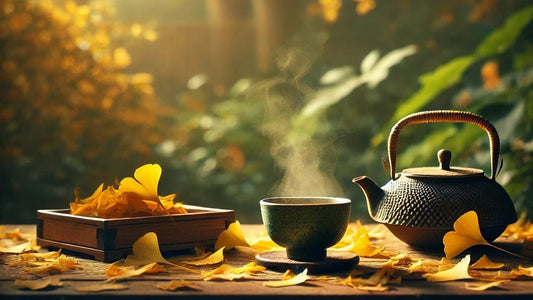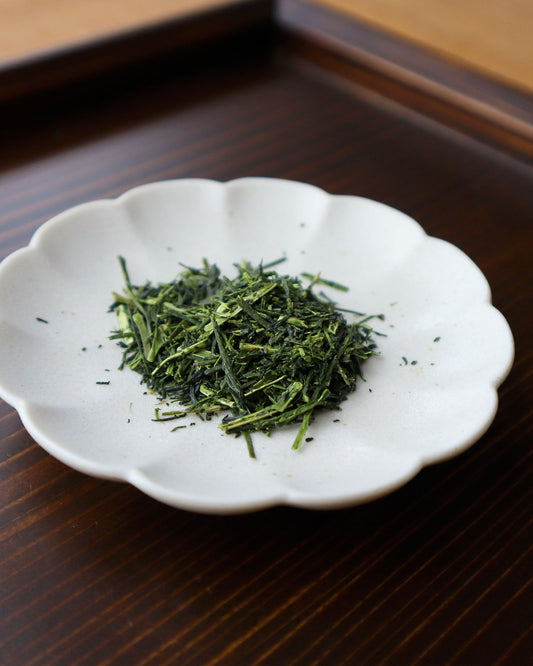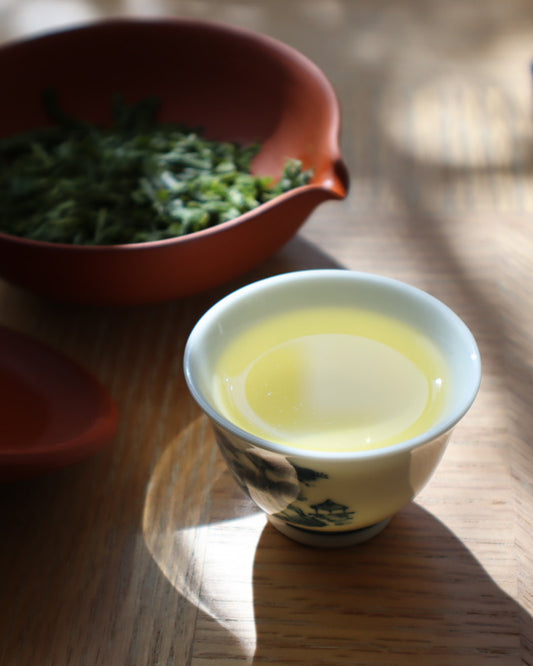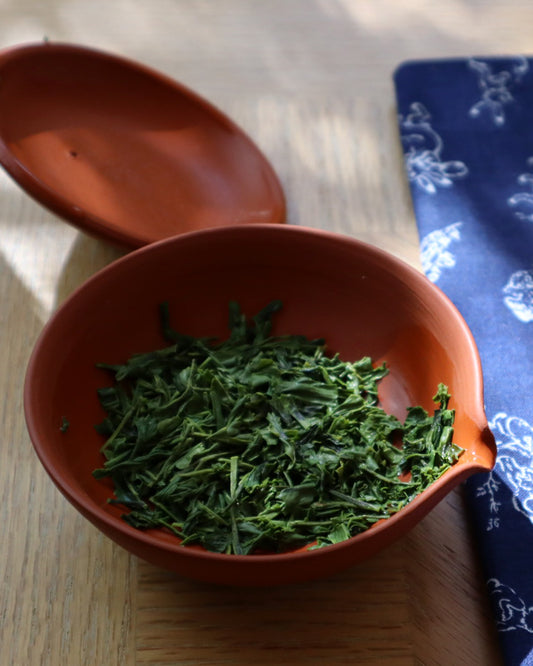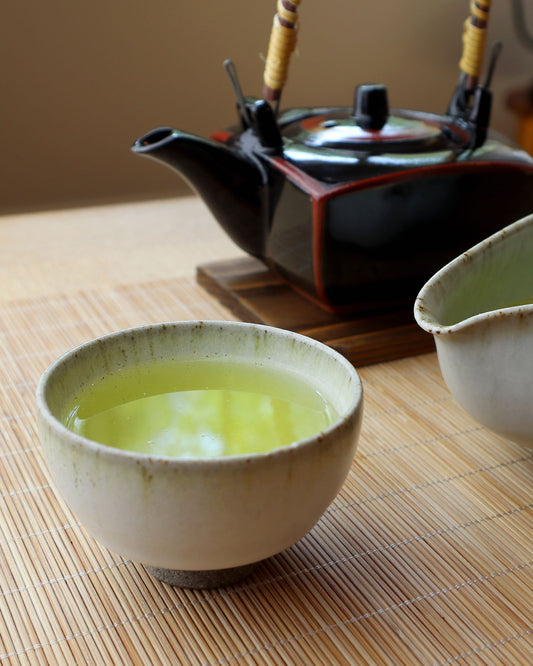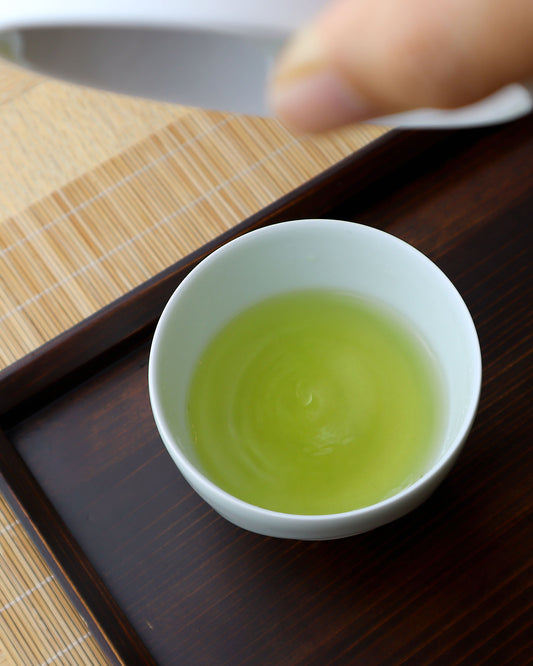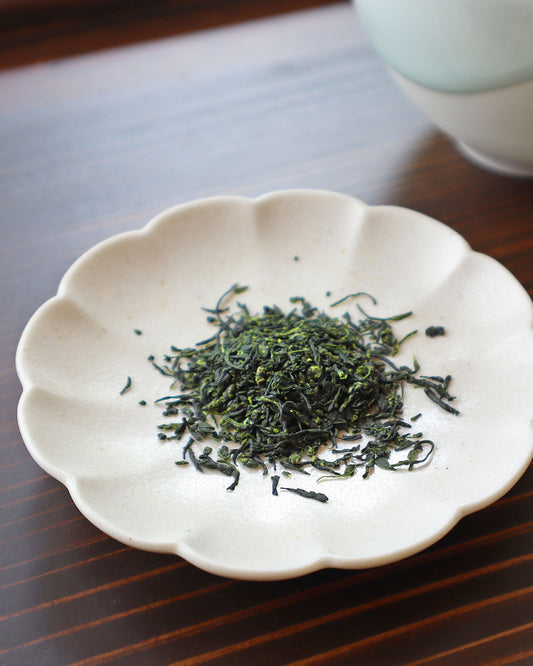How is sencha made? The process of transforming delicate tea leaves into the vibrant, aromatic brew we savor is an intricate dance of tradition and innovation. Here's the fascinating journey of how Japanese Sencha is meticulously processed and made.
Cultivation: The Foundation of Flavor
The journey begins in the tea fields, where tea is cultivated with precision and care. The region, the choice of cultivar, the timing of harvesting, and the climate all contribute to the distinctive flavor profile of the final tea, even before processing. Most sencha is harvested during the first flush in spring, when the leaves are tender and carry nuanced taste.
Steaming: Capturing Freshness and Vibrancy
Directly after cutting in the harvest season, the leaves are quickly moved to be processed - steamed, dried and rolled. This process sets Japanese Sencha apart from other green teas. Steaming is an art and each maker has their own preferences. The steaming method halts fermentation and preserves the vivid green color of the leaves, locking in the fresh, grassy aroma and preventing oxidation.
Like light or dark roasts in coffee, leaves can be steamed lightly (asamushi), medium (chumushi), or deeply (fukamushi) to draw out different nuances from the leaf. Lightly steamed asamushis will retain more of their leaf shape and floral characteristics, while deeply steamed fukamushis break up into smaller pieces, and show deeper colors and umami notes when brewed.
Rolling and Shaping: Craftsmanship in Motion
After steaming, the tea leaves are rolled to shape them into the characteristic needle-like form associated with sencha. In the very rarest examples this step may be performed by hand, but even with modern equipment is assisted with the hand and eye of skilled teamakers. It defines the appearance of the tea but also influences its infusion characteristics. The rolling process releases natural oils within the leaves, intensifying the tea's flavors.
Drying: Sealing in the Essence
Following the rolling phase, the tea leaves are dried to remove excess moisture and preserve the flavor. The drying process is typically done using hot air that blows the leaves into the air.
Sorting and Grading: Precision in Every Cup
The tea leaves then undergo meticulous sorting and grading, usually in various stages of filtering. This step allows a tea blender to select only the parts of the leaves that they want in the final tea. The grading process takes into account factors such as leaf size, appearance, and overall quality, for a consistent tea.
Packaging: Ready for Your Teapot
The final stage involves carefully packaging the Sencha for distribution. We use oxygen-free packaging Whether in loose-leaf form or convenient tea bags, the packaging is designed to preserve the tea's freshness and flavor until it reaches your teapot.
Japanese Sencha is more than a tea; it's a reflection of the meticulous artistry and dedication embedded in Japanese tea culture. From the verdant fields to the steaming chambers, and finally to your teacup, every step in the Sencha-making process contributes to a symphony of flavors and aromas that captivate tea enthusiasts worldwide. So, the next time you savor a cup of Japanese Sencha, know that you're not just drinking tea – you're experiencing a centuries-old tradition, steeped in nature's essence and the skilled hands of tea artisans.

